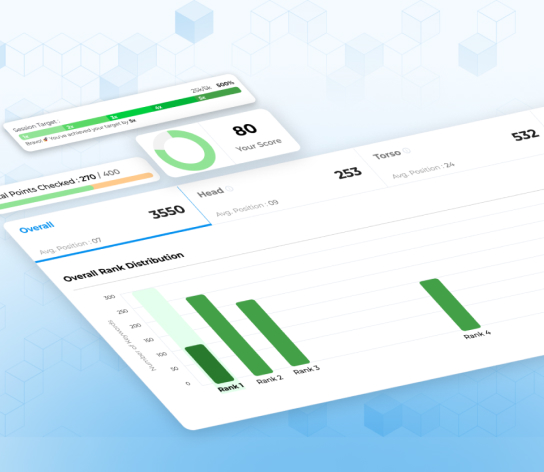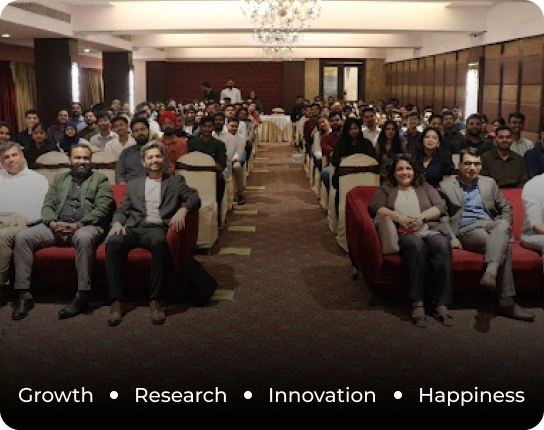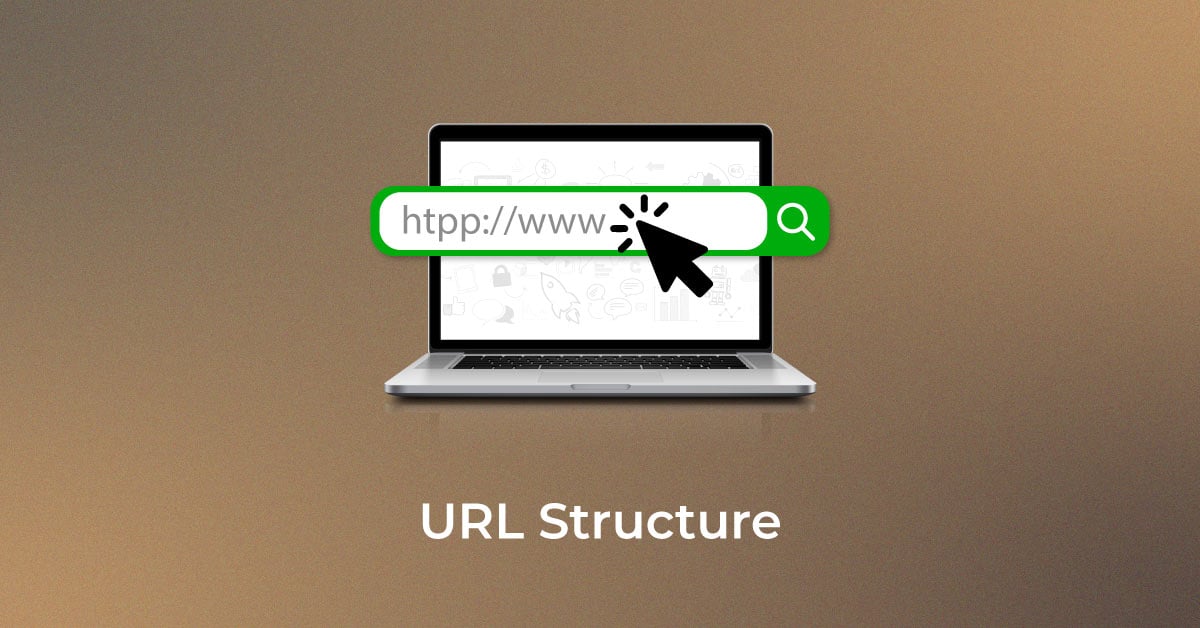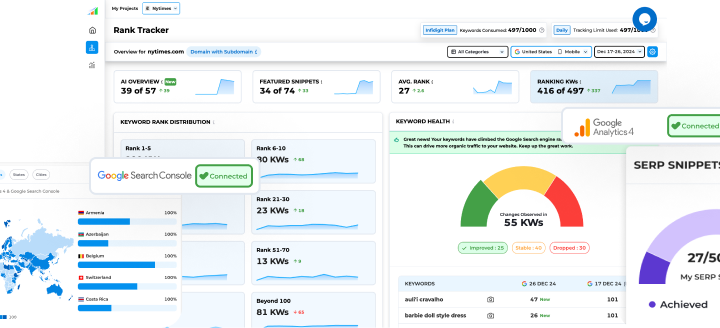Google is revolutionising the way we interact with search with the launch of Search Generative Experience (SGE) — a robust combination of AI and search that aims to deliver fast, conversational, and complete answers right within the search results.
SGE is not another update; it represents a fundamental change in the way search results are presented and how users engage with information. For SEO specialists, content creators, and marketers, it is essential to comprehend this change in order to remain ahead.
Let’s explore what SGE is, how it functions, its effect on SEO, and how you can adjust your strategy accordingly.
What is Google SGE?
Google’s Search Generative Experience (SGE) is a testing search feature that leverages generative AI to give users quick, summarised responses to their queries — at the very top of the search results page.
Rather than simply delivering a list of blue links, Google now presents AI-generated summaries that pull in information from a variety of sources, enabling users to get what they’re looking for more quickly without clicking through several pages.
For instance, if you enter a query such as “How to begin a fitness routine for beginners,” SGE may show a step-by-step guide, important considerations, and advice in a concise manner — AI-generated — followed by recommended follow-up questions and standard web results.
How Does Google SGE Work?
SGE employs sophisticated large language models (LLMs), natural language processing, and real-time query comprehension to produce useful answers. It draws from Google’s indexed material to:
- Analyse the intent of the query
- Find applicable content throughout the web.
- Summarise and create a unified answer.
- Provide related queries or follow-ups.
This makes a standard search more of a guided, conversational experience, where the user is provided with context instantly and can dig deeper.
Why SGE Matters
SGE is meant to enhance search in three major ways:
- Less Information Overload: Rather than searching 10+ sites, users receive a synthesised answer promptly
- Conversational Search: Follow-up questions enable a natural, interactive method to explore a subject further.
- More Inclusive Accessibility: SGE breaks down difficult subjects into easier-to-grasp information for more users.
This new form not only alters the way people receive information — it alters the way content is presented.
How Will SGE Affect SEO?
SGE brings both opportunities and challenges to organic visibility. Here’s how it impacts SEO:
1. Organic Clicks May Drop
With AI summaries offering quick answers, fewer readers might scroll down to click on conventional organic results — particularly for information searches.
2. Content Must Be Reference-Ready
Google’s AI looks for clear, well-structured, and trustworthy content to use in summaries. If your content is vague, shallow, or poorly formatted, it’s unlikely to be featured.
3. E-E-A-T Even More Crucial
Experience, Expertise, Authority, and Trust are more important than ever. SGE is built to favour authoritative, high-quality sources for creating its responses.
4. Move from Ranking Pages to Ranking Passages
With SGE, specific sections or paragraphs of your content can appear in AI summaries — not whole pages. It extends Google’s Passage Indexing, where individual parts of a page can rank if they highly match a query. Optimise paragraph-wise, making each section clear, concise, and satisfying a particular user intent.
How to Optimize Content to Rank in SGE
Although there is no sure way to be highlighted in an SGE snippet, you can certainly boost your prospects by making your content Google’s favourite:
1. Respond Specific, Long-Tail Questions
SGE wants to respond to in-depth user queries. Leverage tools such as AnswerThePublic or Google’s “People also ask” to find out long-tail questions your readers are searching for.
2. Organize Content Clearly
Make use of explanatory H2s and H3s.
Make paragraphs concise.
Use bullet points, lists, and FAQs. The more scannable your content, the easier it will be for AI to pull out key passages.
3. Write Naturally and Informatively
Don’t keyword stuff. Write in natural language that captures how humans actually pose questions. Emphasise clarity and relevance.
4. Use Data, Sources, and Examples
Content that contains concrete examples, data, or cited sources might be viewed as more credible and more likely to be cited.
5. Apply Structured Data When Possible
Deploying schema (FAQ, How-To, Article, etc.) will assist Google in better interpretation and classification of your content.
Conclusion
Google’s Search Generative Experience is not a feature but rather an indicator of the future of search. As search becomes more embedded with AI, SEO efforts need to adapt. Prioritize clarity, user intent, and depth of topic to stay visible in this emerging AI-based environment.
By knowing how SGE operates and making your content more responsive to it, you’re not merely keeping pace — you’re laying the groundwork for sustainable SEO in the age of AI.
Key Takeaways
SGE definitely changes traditional SEO, but then it’s all about visibility inside AI-created answers.
To succeed, focus on creating authoritative, valuable, and organised content that answers genuine user questions.
FAQs
1. What will happen to traditional SEO rankings with SGE?
SGE can decrease visibility for traditional organic results, particularly for informational searches. However, content that meets SGE’s summarisation criteria can still be seen highly in AI-generated responses.
2. How does SGE select what content to summarise?
SGE draws on Google’s crawled web pages, picking content based on relevance, authoritativeness, clarity, and how well it addresses the user’s intent.
3. Can SGE show distinct results for various users?
Yes. SGE uses personalisation by taking into account search history, location, and behaviour, meaning users may see slightly different summaries for the same query.
4. Is it possible to monitor whether my content shows in SGE?
Google presently does not include SGE as a distinct reporting category in the Search Console. Track manually or gauge changes in impressions and CTRs to estimate impact.
5. How can I create SGE-optimized content?
Write clear, helpful answers to specific questions. Structure your content using headings and subheadings, and use a natural, informative tone backed by real data or examples.
6. Does SGE visibility equal more traffic?
Not always. While visibility improves, users won’t click through if their query is satisfied in the AI summary. To generate clicks, offer value beyond the summary — like greater insights, images, or tools.
Popular Searches
How useful was this post?
0 / 5. 0
















